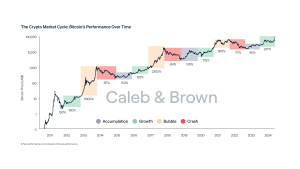Understanding Bitcoin’s Price Volatility
Unravel the mysteries of Bitcoin’s volatile price! This guide explores the key factors influencing Bitcoin’s value, from global economics to social media buzz. Navigate the crypto market with confidence.
The price of Bitcoin, a digital currency that has captivated the world, is notoriously volatile. Its value fluctuates wildly, influenced by a complex interplay of factors ranging from global economic events to social media trends. Understanding these dynamics is crucial for anyone considering investing in or interacting with Bitcoin. This comprehensive guide delves into the multifaceted nature of Bitcoin’s price, exploring the key drivers and offering insights into potential future trends.
Understanding Bitcoin’s Volatility
Bitcoin’s price is known for its dramatic swings; Unlike traditional currencies backed by governments, Bitcoin’s value is determined solely by supply and demand within its decentralized market. This lack of central control contributes significantly to its volatility. A sudden influx of buyers can drive the price up sharply, while a wave of selling pressure can lead to equally dramatic declines. This inherent volatility is a double-edged sword, offering the potential for substantial gains but also exposing investors to significant risks.
The Role of Supply and Demand
The fundamental principle governing Bitcoin’s price is the basic economic law of supply and demand. Bitcoin’s limited supply of 21 million coins acts as a constraint, creating scarcity. As demand increases, driven by factors such as increasing adoption or positive media coverage, the price tends to rise. Conversely, decreased demand, perhaps due to regulatory uncertainty or negative news, can cause the price to fall. This dynamic interplay between supply and demand is the primary driver of Bitcoin’s price fluctuations.
Influence of Market Sentiment
Market sentiment plays a crucial role in shaping Bitcoin’s price. Positive news, such as the adoption of Bitcoin by major corporations or positive regulatory developments, can boost investor confidence, leading to increased demand and higher prices. Conversely, negative news, such as security breaches or regulatory crackdowns, can trigger a sell-off, causing the price to plummet. Social media chatter and news headlines can significantly influence market sentiment, amplifying price movements.
Macroeconomic Factors and Bitcoin’s Price
Bitcoin’s price is not immune to macroeconomic forces. Global economic events, such as recessions, inflation, and geopolitical instability, can significantly impact investor behavior and consequently, Bitcoin’s price. During times of economic uncertainty, investors may view Bitcoin as a safe haven asset, driving up demand and price. Conversely, during periods of economic stability, investors might shift their focus to more traditional assets, leading to a decline in Bitcoin’s price.
Inflation and Bitcoin’s Value Proposition
One of the arguments frequently made in favor of Bitcoin is its potential as a hedge against inflation. Traditional fiat currencies are susceptible to inflation, which erodes their purchasing power over time. Bitcoin’s fixed supply is seen by many as a safeguard against this erosion. However, Bitcoin’s price itself is volatile, and its value as an inflation hedge remains a subject of ongoing debate among economists and financial analysts.
Geopolitical Events and Market Reactions
Geopolitical events can also have a significant impact on Bitcoin’s price. Periods of political instability or international conflict can create uncertainty in financial markets, leading investors to seek refuge in assets perceived as less risky. Bitcoin, despite its volatility, has sometimes been viewed as such an asset, resulting in price increases during times of global turmoil. Conversely, positive geopolitical developments can lead to a shift towards more traditional assets, potentially resulting in a decline in Bitcoin’s price.
Regulatory Landscape and its Impact
The regulatory landscape surrounding Bitcoin is constantly evolving, and this evolution significantly impacts its price. Governments worldwide are grappling with how to regulate cryptocurrencies, and their actions can have a profound effect on investor sentiment and market activity. Favorable regulations can lead to increased adoption and price appreciation, while unfavorable regulations can dampen investor enthusiasm and cause price declines.
Government Regulations and Bitcoin Adoption
Clear and consistent regulatory frameworks can foster greater investor confidence and facilitate wider adoption of Bitcoin. This, in turn, can lead to increased demand and higher prices. Conversely, ambiguous or overly restrictive regulations can create uncertainty and discourage investment, leading to price drops. The regulatory landscape is a dynamic and critical factor influencing Bitcoin’s price trajectory.
International Regulatory Harmonization
The lack of international regulatory harmonization adds another layer of complexity to the Bitcoin price equation. Different countries have varying approaches to regulating cryptocurrencies, creating inconsistencies and potential challenges for investors operating across borders. A coordinated global approach to cryptocurrency regulation could potentially stabilize the market and reduce price volatility, but achieving such harmonization is a long-term challenge.
Technological Advancements and Bitcoin’s Future
Technological advancements within the Bitcoin ecosystem can also influence its price. Improvements in scalability, security, and transaction speed can enhance Bitcoin’s usability and appeal, potentially driving up demand and price. Conversely, significant technological setbacks or security vulnerabilities could negatively impact investor confidence and lead to price declines.
Scalability Solutions and Network Efficiency
One of the ongoing challenges facing Bitcoin is scalability. The network’s capacity to process transactions is limited, which can lead to higher transaction fees and slower confirmation times. Technological advancements aimed at improving scalability, such as the Lightning Network, could significantly enhance Bitcoin’s efficiency and attract more users, potentially boosting its price.
Security Enhancements and Risk Mitigation
Security is paramount in the cryptocurrency world. Technological improvements that enhance the security of the Bitcoin network, such as upgraded cryptographic algorithms or improved wallet security measures, can increase investor confidence and contribute to price stability. Conversely, security breaches or vulnerabilities can severely damage investor trust and lead to significant price drops.
Predicting the Bitcoin Price: A Herculean Task
Predicting the future price of Bitcoin is a notoriously difficult task. The cryptocurrency market is highly volatile and influenced by numerous factors, many of which are unpredictable. While technical analysis and fundamental analysis can provide some insights, they are not foolproof methods for predicting future price movements. The complexity of the market and the influence of unpredictable events make accurate price prediction a nearly impossible undertaking.
Technical Analysis and its Limitations
Technical analysis involves studying past price charts and trading volume to identify patterns and predict future price movements. While this approach can be helpful in identifying short-term trends, it has limitations when applied to a highly volatile asset like Bitcoin. Unforeseen events can disrupt established patterns, rendering technical analysis ineffective.
Fundamental Analysis and Market Drivers
Fundamental analysis focuses on evaluating the underlying value of Bitcoin based on factors such as its scarcity, adoption rate, and regulatory environment. While fundamental analysis can offer valuable insights into long-term trends, it struggles to predict short-term price fluctuations. The market’s reaction to fundamental factors can be unpredictable, making it difficult to translate fundamental analysis into precise price predictions.
- Consider Diversification: Don’t put all your eggs in one basket. Diversify your investment portfolio to mitigate risk.
- Conduct Thorough Research: Understand the risks and potential rewards before investing in Bitcoin.
- Only Invest What You Can Afford to Lose: Bitcoin is a highly volatile asset, and losses are possible.
Understanding the factors that influence Bitcoin’s price is crucial for navigating the cryptocurrency market. However, it’s important to remember that no prediction is guaranteed. The market is influenced by a complex interplay of forces, and unexpected events can significantly impact price movements. Successful navigation of this volatile market requires a blend of knowledge, caution, and risk management.
Ultimately, Bitcoin’s price remains an enigma, subject to the unpredictable whims of the market. While analyzing various factors offers valuable insights, it’s crucial to remember that investing in Bitcoin involves inherent risks. It’s a dynamic market that demands continuous learning and adaptation. Responsible investment strategies, including thorough research and diversification, are paramount to mitigating these risks.
The path of Bitcoin’s price remains uncertain, influenced by constantly shifting technological, economic, and regulatory landscapes. Continued monitoring of these developments is essential for anyone involved in the Bitcoin ecosystem. Informed decision-making is key to successfully navigating this exciting but volatile market.
The future of Bitcoin’s price is inextricably linked to the broader adoption of cryptocurrencies and the evolving regulatory environment. Navigating this complex landscape requires a deep understanding of the forces at play and a commitment to staying informed about market trends.
Ultimately, success in the Bitcoin market hinges on a well-informed approach that balances potential rewards with the inherent risks.







